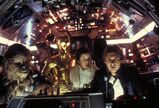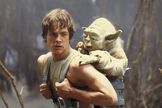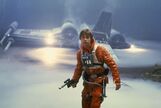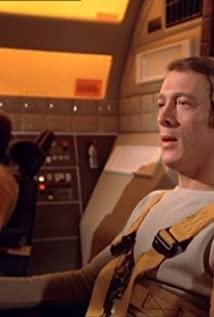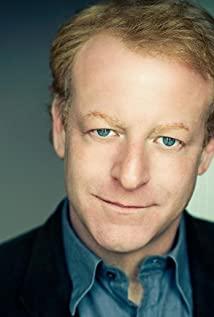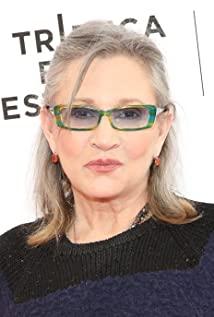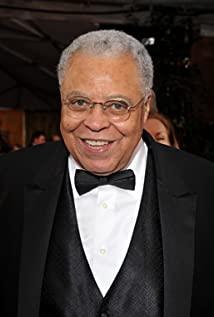Star Wars: Episode V - The Empire Strikes Back Film preparation
-
Damien 2022-03-21 09:01:02
Liver than the previous one. The father-son play is interesting, the depiction of Luke's heart is rough, and the shaping of Anakin is gradually fuller, and its past is very exciting. Master Yoda is like Babaozhai. The love between Solo and Leah was abrupt and superfluous. The moment he was poured out was very frustrating, and Chubeka screamed miserably. The Milky Way is beautiful, so I will look at it tomorrow.
-
Paris 2022-04-20 09:01:01
9.0/10. ①Two lines intertwined: Luke looking for Yoda to train the Force and going to Cloud City to save his friends; Darth Vader looking for Luke and chasing the Millennium Falcon warship. ② Many of the sci-fi designs of this one are similar to the first one (but the design is also very delicate). The walking machine, the mouth of the monster that Solo and the Millennium Falcon entered, the misty swamp forest where Yoda is located, Yoda's shape and body expression design, the towering Cloud City and its landforms, the terrace abyss of Cloud City (Luke and where the father fought and fell), etc. ③The asteroid belt chase is quite imaginative and beautiful. ④Defects: The villain is flattened and illogically masked; a lot of gags (same as the first part). ⑤ "I am your father" + lovers eventually become brothers and sisters. ⑥ Lightsaber duel is slightly improved, but the sunset is still red.
Star Wars: Episode V - The Empire Strikes Back quotes
-
Darth Vader: Yes, Admiral, what is it?
Admiral Piett: The Emperor commands you make contact with him.
Darth Vader: Move the ship out of the asteroid field so that we can send a clear transmission.
-
Luke: There's something not right here... I feel cold. Death.
Yoda: [points to a cave opening beneath a large tree] That place... is strong with the dark side of the Force. A domain of evil it is. In you must go.
Luke: What's in there?
Yoda: Only what you take with you.



